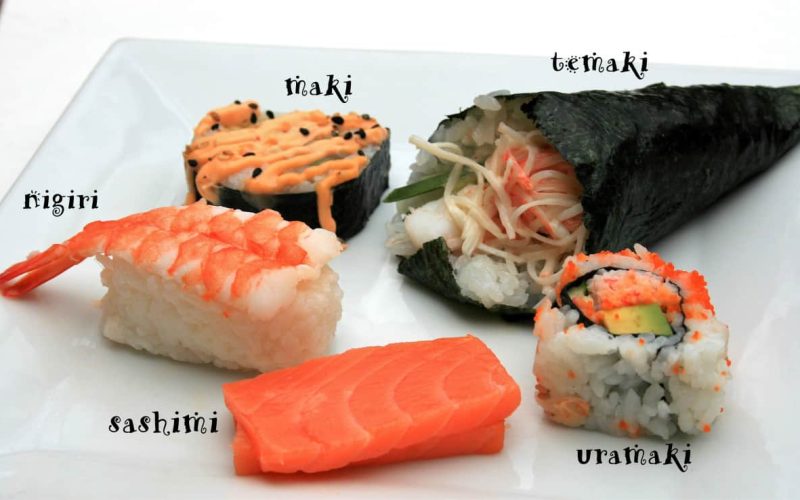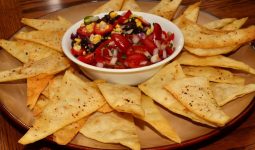To comprehend the different types of Sushi, you must first grasp the fundamentals. Sushi is now widely available in supermarkets and restaurants throughout the world.
It is a highly artistic and talented Japanese cuisine developed in the country. Sushi incorporates raw and cooked seafood, veggies, and vinegared rice. Soy sauce, wasabi, and pickled ginger are common side garnishes.
Furthermore, Sushi, as we know it today, is very different from what it was when it was first produced.
In Asia, sushi denotes salty fish meals served with fermented rice. Until the Edo period, this was a regular practice in Japan.
Additionally, after this period, sushi evolved into Edomae sushi, which is much more comparable to the sushi we know and love today.
Modern sushi uses meat, seafood, vegetables, and vinegared rice. Furthermore, this dish incorporates the best qualities of both classic and contemporary ingredients.
There’s also a distinction between Japanese and Western-style Sushi so that you might prefer one.
The different types of sushi are listed below.
1. Sashimi
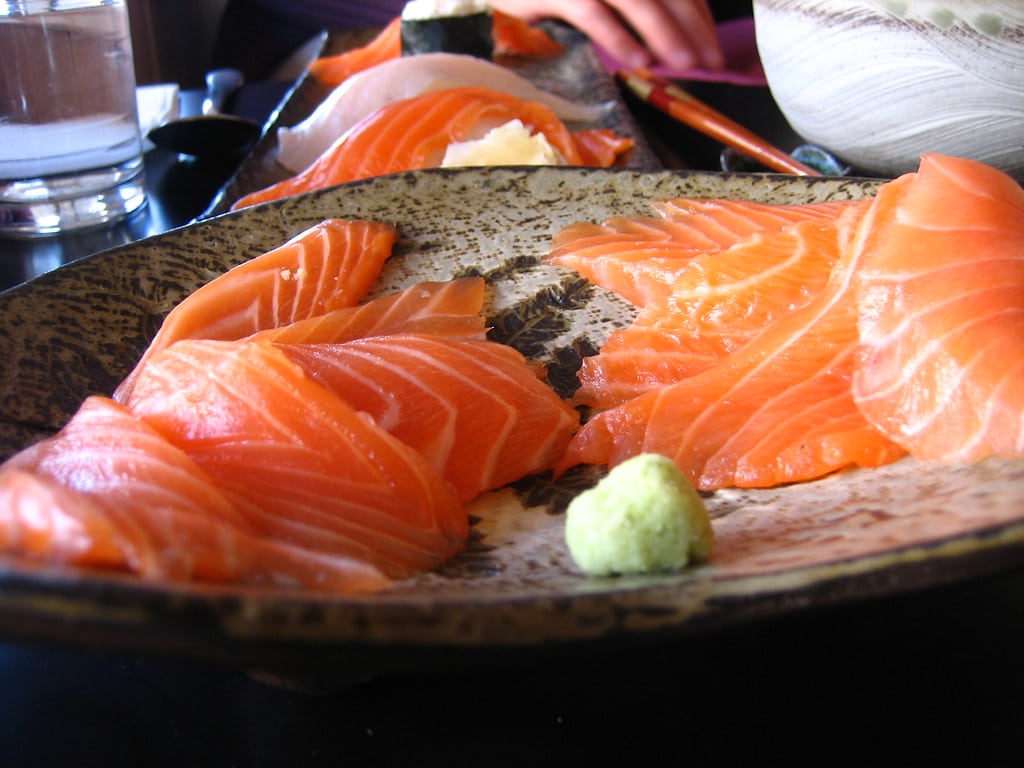
Raw seafood chopped into thin slices is referred to as Sashimi. The shellfish must be cut correctly to “guarantee the mouthfeel is smooth, and the bite has a melt-in-your-mouth quality.”
Furthermore, it should come as no surprise that Sashimi is popular among sushi lovers, given the skill necessary to produce it effectively.
Additionally, according to Jue, sashimi is “the purest form of consuming fish,” and it’s also tempting for people searching for a low-carb alternative to rice-based dishes.
2. Nigiri

Nigiri is also one of the most well-known Sushi to ease you into learning about the many forms of Sushi.
Depending on the style, sushi is served with raw fish, Tamago (egg), or vegetables.
You’ll only encounter this form of Sushi if it’s made from a cut of beef rather than seafood.
It’s usually served with raw fish like salmon or tuna. For a richer flavor, the fish can also be grilled or seared.
3. Gunkan Maki (Boat Shaped Maki)
Gunkan maki translates to “warship roll” in Japanese, indicating the nigiri’s characteristic boat shape.
Additionally, it was created in 1941 by Ginza Kyubey restaurant in response to a customer’s joking that he wanted something more peculiar on his Sushi.
Later, he suggested that fish roes would be an excellent solution, and Chef Imada helped bring the notion to life.
Other soft, high-end toppings, like sea urchins, scallops, and oysters, quickly appeared on gunkan maki and were kept using a nori strip.
4. Uramaki
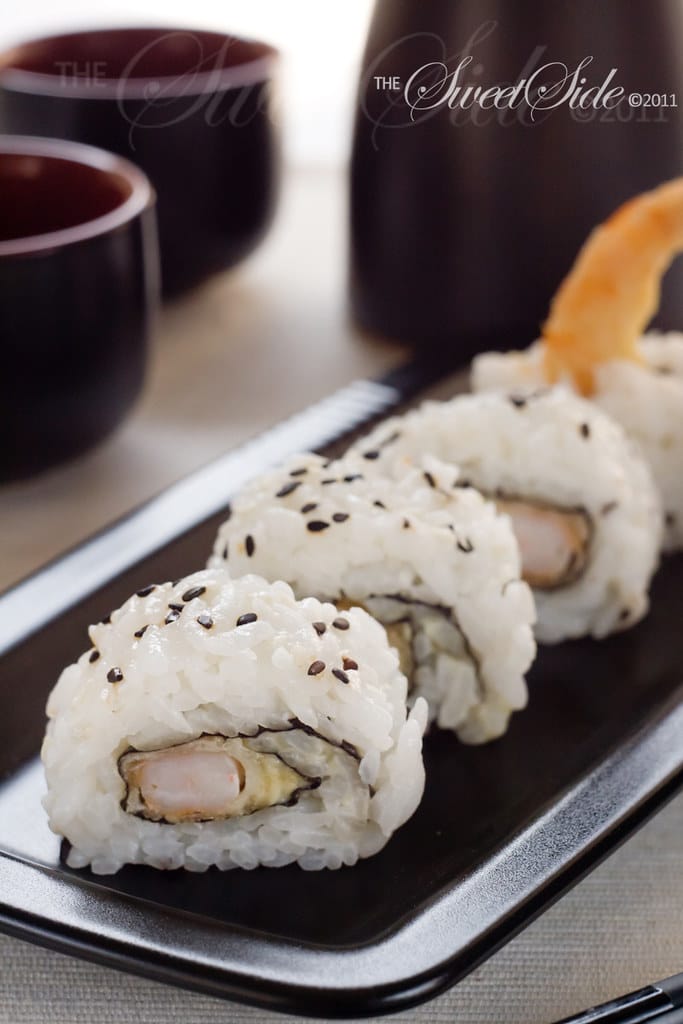
Uramaki and maki have a lot in common, but the mix of the two sets them apart.
Additionally, Uramaki is an inside-out roll with rice on the exterior, a nori sheet in the middle, and sushi filling. Aside from that, there’s not much that distinguishes uramaki from maki.
Both varieties of Sushi come with a wide range of ingredients, from cooked and raw seafood to vegetables, and sometimes come with extra toppings.
Furthermore, the Bottom line is that maki and uramaki are the most popular Sushi in the United States.
This is likely due to the variety of alternatives available to customers (including those who are averse to eating raw fish).
5. Hosomaki
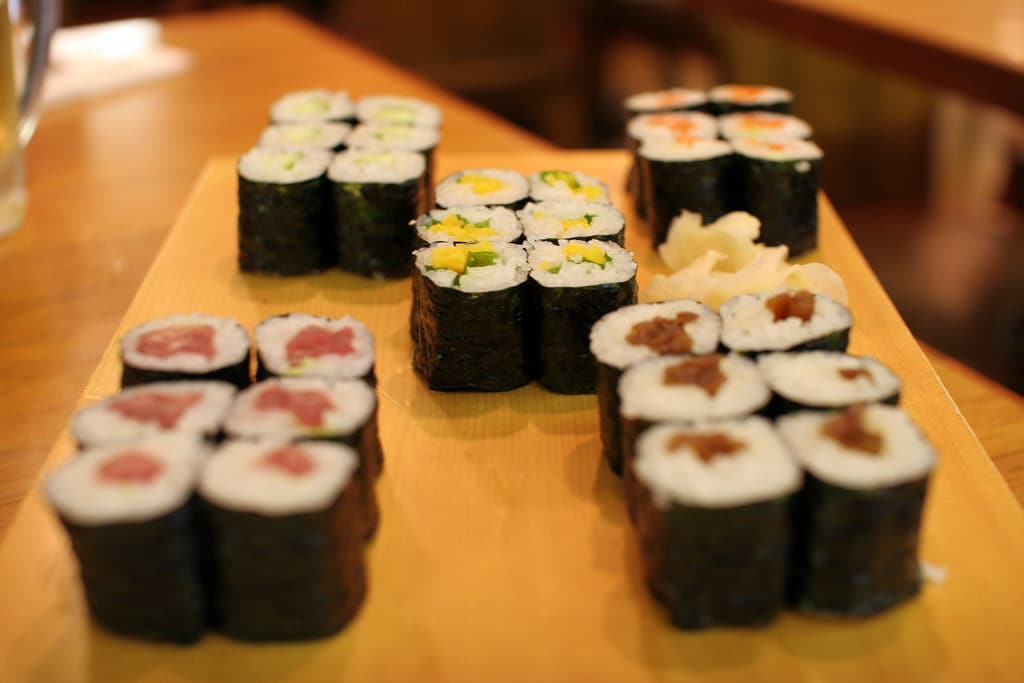
Next on our list of different types of Sushi is The Hosomaki. The hosomaki is the most basic sort of makizushi.
Rather than having a variety of fillings, it just has one, usually cucumber, salmon, tuna, or crab stick. Additionally, it’s the tiniest makizushi and is famous for its simplicity.
6. Chirashizushi

From the maki family, chirashizushi, which means “scattered sushi,” is a sushi bowl with a vinegared rice foundation and raw fish and other items on top.
Additionally, Raw fish is utilized in various ways, with salmon and tuna being the most common.
Shredded egg, nori, and salmon roe are frequently added to the top for a delectable and colorful finish.
Furthermore, this meal is simple to make and popular as a party snack because it can be served on a large plate and easily shared.
7. Temaki
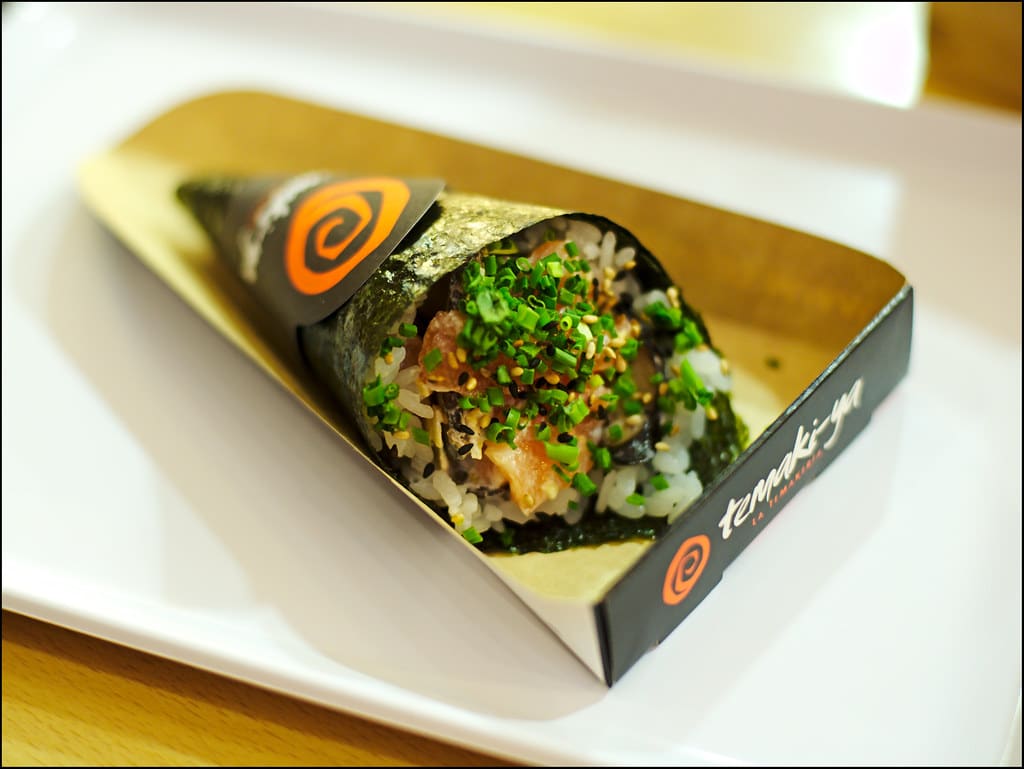
Put down your chopsticks and grab a stack of napkins because temaki is a fun sort of Sushi to eat with your hands—and yes, it will be messy.
Furthermore, according to Chau, the stuffed seaweed cones are highly customizable and a particularly innovative sort of Sushi in terms of their contents and how they’re served.
A neat cone-shaped bundle combining vegetables, fish, and sauces will be placed on a plate or into a cup.
The ultimate product is Sushi, with a wide range of flavors and textures meant to be savored individually at large gatherings.
8. Temarizushi
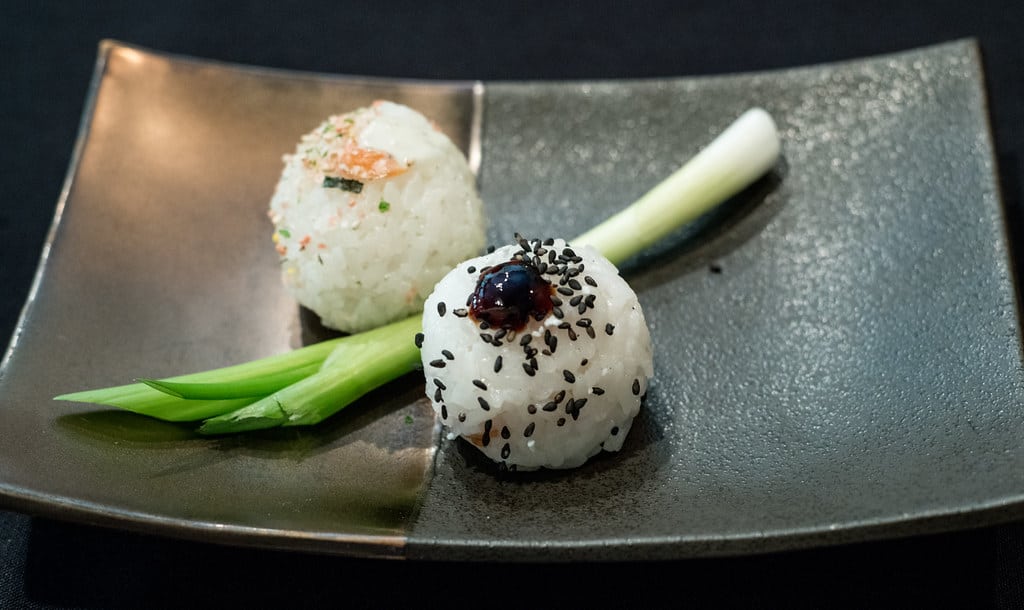
Temarizushi is also one of the different types of Sushi. Furthermore, Temarizushi is similar to nigiri, but the rice is fashioned into a ball instead of a triangle.
Additionally, it focuses more on visual appearance. Thus, each ball should be topped with colorful pieces of seafood and edible garnishings such as tuna, salmon, octopus, lotus root slices, etc.
On significant occasions in Japan, such as birthdays, Mother’s Day, and Valentine’s Day, people exchange temarizushi as gifts.
On Hinamatsuri, commonly known as Girl’s Day, Sushi also appears.
9. Oshizushi

As you may be aware, Japan has various regional cuisines. Oshizushi, which means “box sushi” or “pressed sushi,” is one sort of Sushi from Osaka.
Additionally, this is one of the earliest types of Sushi, and it is the heir to narezushi, which arose from preserving fish by compressing it securely in fermented rice boxes.
10. Inarizushi
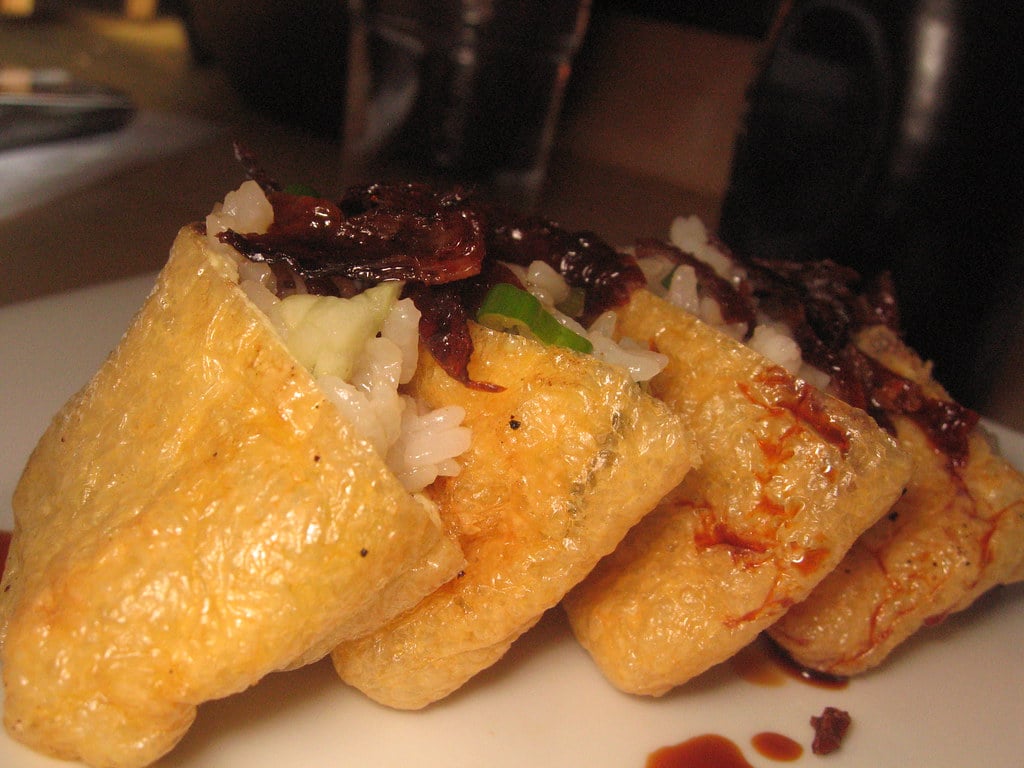
Another famous sushi in Japanese food culture is inarizushi, one of the more minor well-known forms of Sushi.
Inarizushi is sushi rice in a pocket of aburaage, rather than the usual maki or nigiri.
Furthermore, inarizushi is a sweet sushi dish rather than a savory one, although it is not considered a dessert in Japan.
Additionally, it’s a popular side dish that goes well in a bento box.
In conclusion, go ahead and try them all, or better yet, enroll in a sushi cooking class in Japan and learn how to create them yourself. You’ll undoubtedly find a new favorite type of Sushi!




